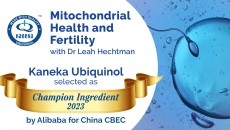Letter to the editor – Eye health nutrients
Kemin: 'Statement that all three carotenoids found in the macula may be needed in a formulation is premature'

In response to the letter to the editor posted yesterday from Dr John Nolan and Prof Stephen Beatty, Kemin's Richard Roberts, PhD, Justin Green, PhD, and Samanta Maci, MS, submitted the following letter. To help further this debate, we have published the letter in full:
To the editor: An increase in serum lutein, zeaxanthin, and meso-zeaxanthin does not necessarily correlate to an increase in macular pigment
Kemin continues to support the position that the statement published in January 15, 2013, edition of NutraIngredients saying that “a combination of all three carotenoids – lutein, zeaxanthin, and meso-zeaxanthin – may be needed in a formulation to boost levels of carotenoids in the macula” is not supported by the study reported in the Meagher, et al. article entitled “Serum response to supplemental macular carotenoids in subjects with and without age-related macular degeneration.”1
There is no demonstration in this study that increasing serum levels of carotenoids lutein (L), zeaxanthin (Z) and meso-zeaxanthin (MZ) will boost levels of the same carotenoids in the macula. Since serum levels were the only results presented, it is impossible to relate those results to macular levels. In order to support the assertion that increasing serum levels of carotenoids will boost levels of the same carotenoids in the macula, one must evaluate the macular pigment levels following supplementation with a MZ-only formulation. To date, this research has not been conducted.
Kemin continues to emphasize that MZ is not found in the normal human diet and that the MZ in the macula is produced by the body from the L that is in the diet. As stated in the Meagher, et al., article, “MZ has yet to be found in a typical diet in large amounts”. The Rasmussen, et al., paper, as cited by Dr. J. Nolan and Prof. S Beatty, clearly confirmed that MZ is not present in the foods analyzed except for one egg, possibly originating from Mexico where MZ is sometimes added to poultry rations as a colorant. As stated in the Rasmussen paper, “foods do not appear to be the source of MZ in the macula in the US”. MZ found in supplements is not extracted as MZ from a natural source. It is produced through an intentional industrial chemical alteration of lutein, which can impact the regulatory status of this ingredient.
Kemin’s position is that the Meagher article does not demonstrate a direct correlation between the serum levels of L, Z, and MZ and the amount of macular pigment. Thus, the statement that all three carotenoids found in the macula may be needed in a formulation to boost levels of these carotenoids in the macula is premature.
Reference
1. Meagher K, Thurnham D, Beatty S, Howard A., Connolly E, Cummins W, and Nolan J. (2012) Serum response to supplemental macular carotenoids in subjects with and without age-relatedd macular degeneration. Br J Nutr. doi:10.1017/S0007114512004837.
















